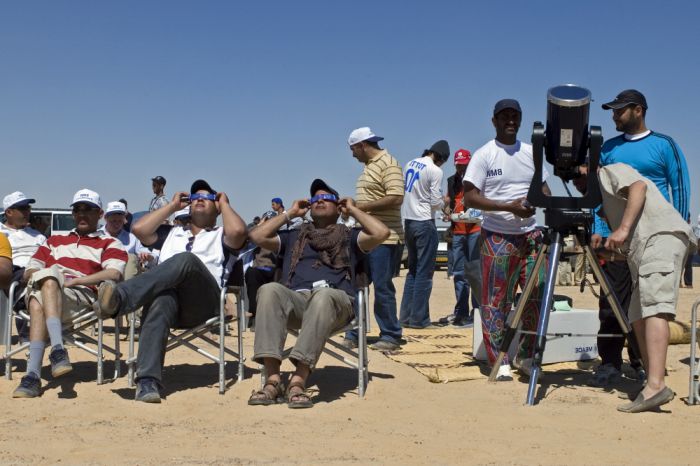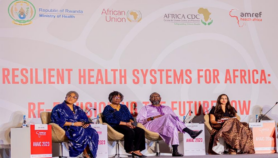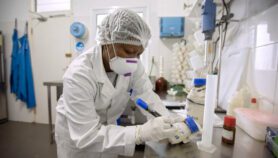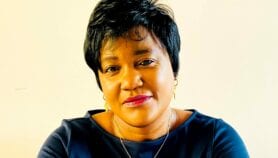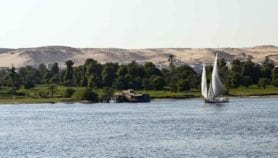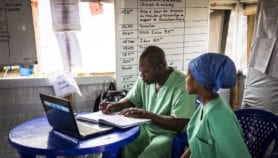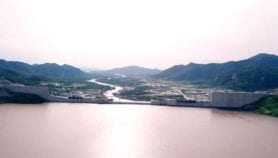By: Tolu Oni
Send to a friend
The details you provide on this page will not be used to send unsolicited email, and will not be sold to a 3rd party. See privacy policy.
Young researchers in particular should get support to engage society routinely, says Tolu Oni.
A wide range of players, from policymakers to the media, often consult scientists at times of crisis or social controversy. At such times, how the public perceives the credibility and relevance of scientists to society is vital to how their views might be received.
Scientists themselves may be quick to criticise when media reports air opinions from underqualified sources. But simply reacting to such reports puts credible scientists on the back foot, forcing them to debate from a defensive position. An example of this is the ongoing debate around climate change and global warming.
“Scientists need to engage with society routinely, during periods of calm, not just during crises.”
Tolu Oni, University of Cape Town
To avoid this, scientists need to engage with society routinely, during periods of calm, not just during crises. This would boost their credibility so that, during crises, there is already a foundation of trust with which to engage.
This is a ‘societal literacy’ approach to public engagement — a two-way approach that highlights the role of scientists. It differs from, but works together with, the more usual calls to improve the public’s scientific literacy: societal literacy requires science to occupy spaces for popular conversation not traditionally considered relevant, or of interest, to science. It also highlights that science is more likely to be perceived as relevant when it is seen as credible in society.
Better engagement can be a crucial, strategic influence on policymaking. It can facilitate how science advice informs policies and their implementation. It can also help maintain a healthy pipeline of young scientists by showing them how science can help understand and improve the world around us.
Routine engagement can also create a more critically engaged public, necessary for navigating science advice in a ‘post-normal science’ era where “facts are uncertain, values in dispute, stakes high and decisions urgent”. It will do this by reinforcing the role of uncertainty in science, so the public no longer perceives scientists who highlight the uncertainties of evidence as less credible.
Teach scientists to reach out
There is a role here for universities to engage more, and, alongside other key players including policymakers and private entities such as industry or philanthropic foundations, to support young scientists as advocates for societal literacy and science engagement.
One area where this is needed is in incorporating engagement skills into scientific education and training. Not all scientists feel naturally inclined to interacting with society beyond academic spaces, but many can be equipped to do so if teaching the relevant skills becomes a higher priority within the education and training system. This would also serve to highlight the importance of the public space in which science operates.
To engage with policymakers and wider society more effectively, emerging scientists need to be equipped with the tools to grapple with the values, ethics and politics of post-normal science — as well as its limitations.
An interesting example of where this type of training is being achieved is the Aalborg Centre for Problem Based Learning in Engineering Science and Sustainability in Denmark. This institution promotes ‘service’ or immersive learning where students learn not just in the classroom but by experiential learning — interacting with services that identify problems and solutions relevant to their field, such as housing or healthcare.
In contrast to more traditional methods, this approach focuses on training scientists by teaching critical thinking skills and through early immersion into real-world problems or working with communities. It also incorporates social values, which helps scientists engage with social, economic and environmental challenges.
The next generation
Another route to better engagement is through young academies — organisations that typically involve promising scientists in their early careers — which are growing around the world and leading the societal literacy approach.
For example, the website of the South African Young Academy of Science, which I cochair, publishes PhD blogs that humanise scientists and the scientific process by showcasing the day-to-day lives of scientists in training — their experiences, motivations, highs and lows. The blogs encourage young students and wider society to take an interest in science, while also promoting young scientists’ engagement with broader social challenges.
Another example is the Research the Headlines blog published by the Young Academy of Scotland. This focuses on how research is portrayed in the media, encouraging scientists to offer views about its social impact from “an expert but independent position”.
Young academies can also identify emerging issues. The Global Young Academy jointly runs an Invisible Worlds project that highlights issues that are underrepresented in the media and wider policy agendas. And the Jobs of the Future Initiative, conceived by a group of young scientists at November’s World Science Forum, identifies changes in training and skills required to address the Sustainable Development Goals.
Active duty
These examples highlight the critical role that universities and young academies can play in creating a new norm where scientists by default play an active role in society. They now operate on an ad-hoc basis — and need to become institutionalised. Structures can be put in place to support that process.
First, policymakers need to create a space, as part of the policy process, for regular engagement with young scientists.
Second, government ministries and private organisations need to partner with young academics and academies to support and promote their work.And third, representatives of young academies should work with universities to adapt curriculums so they are more responsive to the social context of science. Institutions should also reformat their criteria of research excellence to reward excellence in engagement, not just publication in scientific journals.
Tolu Oni is a senior lecturer at the School of Public Health and Family Medicine, University of Cape Town, South Africa. She is a member and cochair of the South African Young Academy of Science, a Next Einstein Forum fellow and a World Economic Forum young scientist. Oni can be contacted at [email protected] or on Twitter @drtolullah


